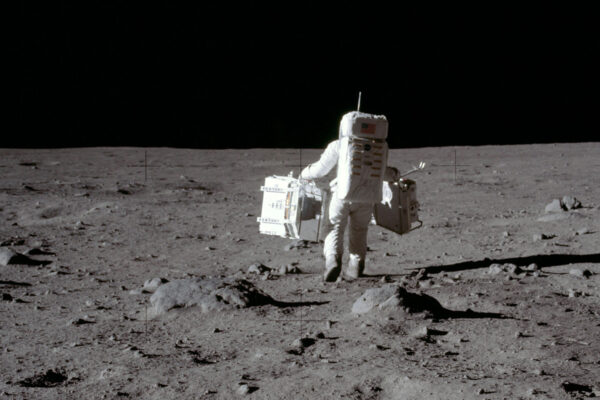Old rocks, new science: What the moon is still teaching us
In September 1969, Washington University in St. Louis scientists were among the first to receive samples collected from the historic Apollo 11 moon mission. At this year’s Lunar and Planetary Science Convention, a student, a faculty member and an alum remind us of the value of these samples and share cutting edge research on decades-old rocks.
Apollo 11 moon rocks still crucial 40 years later, say WUSTL researchers
Photo by Randy KorotevLunar geochemist Randy Korotev, Ph.D., a research professor in the Department of Earth and Planetary Sciences in Arts & Sciences, said that there are still many answers to be gleaned from the moon rocks collected by the Apollo 11 astronauts on their historic moonwalk 40 years ago July 20. And he credits another WUSTL professor for the fact that the astronauts even collected the moon rocks in the first place.
Stardust in the Laboratory
Ernst K. Zinner, Ph.D., research professor of physics and of earth and planetary sciences, both in Arts & Sciences, at Washington University in St. Louis, provided an overview of the study of “Stardust in the Laboratory” Monday, Feb. 20, 2006, at the annual meeting of the American Association for the Advancement of Science (AAAS), held in St. Louis. He also participated in the AAAS “Exploring a Dusty Cosmos” press briefing that morning.

